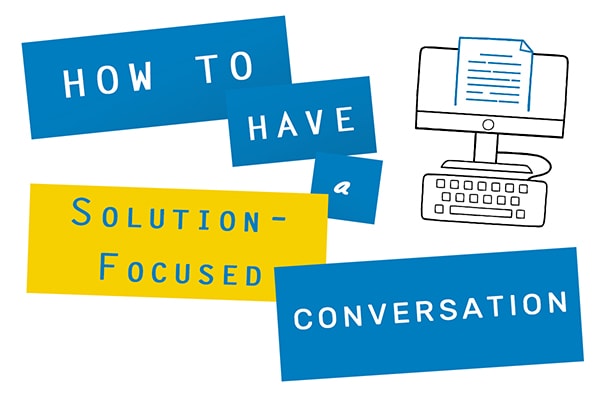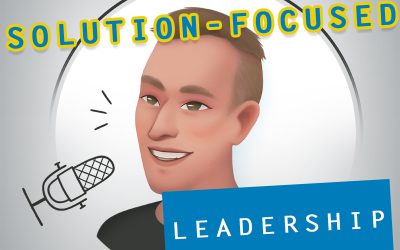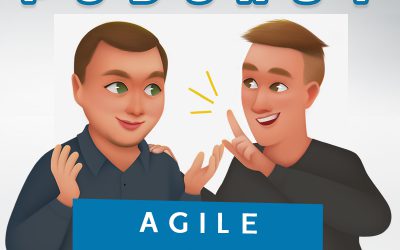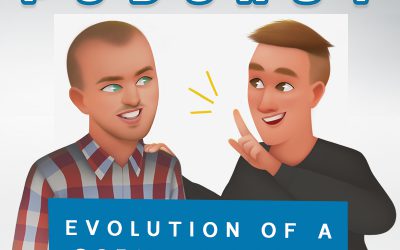How to have a Solution-focused conversation?
“He is a poor observer who does not notice that a stimulating conversation between two persons soon creates a condition in which each utters thoughts he would not have been able to produce by himself or in different company.” (Fleck et al., 2008)
Conversations can be really magical. They bring so much value. They can change our lives, move us forward. I still meet people who do not believe in conversations. They do not see how a conversation could help in finding a solution when they do not know the solution by themselves.
Basic rules
Iveson et al. (2012) state that every conversation should adhere to two simple rules. These rules are circularity and turn-taking. (Iveson et al., 2012) I think that this does not apply just to professional conversations, these two rules form the minimum basis to make any kind of conversation meaningful.
Turn-taking
The rule of turn-taking is pretty simple. In any conversation, the involved parties should contribute to the topic. We tend to notice this rule mostly when it has been broken. We all know the feeling when someone speaks endlessly and does not seek our participation. This is not a conversation, this is a monologue. To have a conversation we need to take turns.
Circularity
Circularity means that when we take turns, our contributions should be somehow connected to what has been already said. A simple example of breaking this rule would be when someone tells you they have just arrived from a vacation and you reply by saying that walking a dog is your tomorrow’s plan. There is no connection between what was said and your reply. By respecting the rule of circularity we make sure that we build together the content. When people do not follow this rule, the other person often feels unheard and slowly disengages from the conversation.
Is that all?
Well, yes and no. Anyone who wants to achieve some kind of meaning in conversations has to follow just these two simple rules. By following just these you can already achieve a lot. The conversation will flow naturally and you will create new ideas together. There is still more than that when we want to become truly masterful in conversations.
Professional conversations
What distinguishes a social conversation from a professional one is the fact that in a professional conversation there is a goal that should be achieved. There is a contract between the parties. One of the most important rules is stated by Iveson et al. (2012) as “the professional should seek no more knowledge about the client than is necessary for the job in hand”. We as professionals will come across multiple opportunities where we might be curious about something. The question to ask yourself is “How will this benefit my client?” if you cannot answer this then probably do not ask such a question. Below you can see a typical example. This has been defined by Bill O’Hanlon (2011) as sightseeing in client’s life.
Sightseeing in client’s life example
Client: I have to solve this difficult situation, it is even more difficult than when I was in school.
Coach: Oh, and where did you go to school?
Sightseeing in the client’s life
Just out of curiosity one might feel tempted to ask such a question. Again, it is important to consider what is the added value for the client if we choose to take this path in the conversation. When you think about the example, you have to agree that if a client shared with us where did she go to school, there is probably no new insight for her. This question is enriching rather for the coach.
Why do you need to know that?
Always keep in mind that the client has the right to ask you a question “Why do you need to know that?”. A competent professional will always be able to answer this question as she is aiming to achieve a specific outcome with her question. We all have experienced a feeling where we thought that someone is asking questions which we do not know why does the person need to know. Always keep in mind that you can be challenged the same way by your clients.
Elective listening
In every conversation, we are constantly making decisions about what part to react. Imagine that you ask a very ordinary question like “Did it take long to get here?” A person might reply: “Well, it took longer than usual, but it wasn’t very long. That was mainly because I took my husband’s car.” Let’s take a look at potential replies to such a statement.
- How long does it usually take?
- Why did you take your husband’s car?
- How long did it actually take?
- How long would it need to take for you to say that it was long?
- What car does your husband have?
As we can see, there are multiple ways to reply to such an ordinary answer. The selection of what do we highlight in the person’s answers is something every professional has to consider, this will rely heavily on the agreed goal for the conversation and the professional’s method. As long as something from the previous answer is picked up then the listening and the rule of circularity have been demonstrated. What you as a professional select to focus on in your replies will influence the direction of the conversation. Every conversation holds an almost infinite number of possibilities for how it can unfold. Below you can see how a solution-focused professional will react differently than other people.
Solution-focused reply
Client: We really had a decent relationship with my boss for the past few months, just recently I have started to feel that he is not being fair to me. We have arguments often and I seem to not understand what does he want.
Coach: And what was different about those times when you had a decent relationship?
It might have been your natural reaction to become curious about the nature of the problem, you might have wanted to ask something like “Why do you feel it is unfair?” or “What starts those arguments?”. Such questions are an attempt to analyze the problem. In solution-focused conversations, we are inviting clients to talk about strengths because we know that this will be the most beneficial focus for the client. Trying to analyze the problem is not what coaching is about. We do not analyze problems to advise, we do not advise at all. Look for strengths rather than weaknesses. The client already has the resources needed to make progress.
Meet the person
In some cultures, social talk might be viewed as a waste of time. In coaching it is important for a couple of minutes to leave our roles aside and meet person to person rather than role to role. This is not a difficult task, just talk about something else than the main topic. Gassman and Grawe when researching the field of psychotherapy found out that if the patient felt that he was perceived as a well-functioning person then a productive work on the topic was more likely. (Gassmann & Grawe, 2006) Having a social talk will help establish this atmosphere.
Constructive listening
Active listening is great but constructive listening is better. When we listen actively we follow the two main rules mentioned above. Circularity and turn-taking. The person feels heard. In solution-focused coaching we need something more, we need constructive listening. It is natural for people to start explaining the nature of the problem to coaches. A solution-focused coach is here to partner in a conversation that leads to finding a solution. As we know, this rarely happens when the client talks about their problems and deficits. Therefore we as coaches need to build rather than understand.
Building rather than understanding
By following the temptation to understand we go on a journey of trying to figure out what is wrong. We analyze the problem then depending on what theoretical model we apply we create assumptions and come to a conclusion. After this happens, there is really not much left then to advise or at least try to lead the client to our conclusion. But this is not coaching. A competent coach does not create assumptions, does not judge the client. Coach partners with the client to explore possibilities.
Build solutions. This means that a skillful coach will listen carefully and wait for an element of the conversation that might be helpful in building solutions.
Client: The situation is getting worse and worse. I am trying to handle it as well as I can.
Coach: And what is it that you are doing to handle the situation?
Above you can see that the coach decided to focus on strengths rather than on deficits. Again, to most junior coaches it is very difficult not to ask questions like “And why is it getting worse?” or “Why is this happening?”. These might be interesting questions but they will rarely lead to any progress. As solution-focused coaches, we are inviting clients to speak about what is working because that’s where the solutions are already happening.
Identity questions
When you see a boy in a fight it’s a boy in a fight. When you see the same boy in a fight next time it’s a problematic boy. It does not take us long before we create judgments about the identity from observing a behavior. Girl reading a book soon becomes a smart girl, a boy shouting at a street becomes a naughty boy. As soon as we create such judgments about someone’s identity we start to look at the person through the lenses of this judgment. It is no surprise that we apply the same method to ourselves. We hold many judgments about ourselves which can either serve us or limit us.
A solution-focused coach will listen constructively to identify a chance to invite the client to speak about something that works. A really masterful coach will identify opportunities to invite the client to talk about her identity to help the client give affirmative feedback to herself which can further help build new possibilities.
Who are you?
Coach: What is working in your communication with your boss?
Client: You know, I talk to him in the morning when the office is not that crowded and I use a calm tone of voice.
Coach: What else do you do?
Client: I also try to express the gratitude that he wants to solve the situation and is investing time in it.
Coach: You talk to him in the morning, calm tone of voice and you express gratitude. What did you draw on to be able to do that?
Client: You know that required patience and focus.
Coach: And what did you learn about yourself when you look at this situation?
Client: I need to say that I am surprised now that I was able to make it happen, seems like I can be very patient even in stressful situations.
Coach: So how would you describe yourself as a person?
Client: I would say I am patient and strategic.
This is an example of a solution-focused coach focusing the attention of the conversation on strengths rather than analyzing the problem. This is a meaningful direction for the client. In this case, the coach does not stop with the first question and continues the conversation to help the client reach conclusions about what she had to draw on to make it happen and what kind of person she might be.
Opportunities not feedback
The coach asks questions to give opportunities to the client to give herself positive feedback. This is way different than trying to praise the client and let her see the positive side. By asking open-ended questions we offer a chance that might be taken. If we would start trying to convince the client that she can do it and has the strength then the coach can lose the coach position and even start to argue with the client.
Always remember that coach is there to listen constructively and be curious about the aspects of the conversation that might be helpful to the client. We should not assume or judge. If the client thinks she cannot do it and you think she can then notice that you made this judgment and get back to the coach position. Whenever we start convincing the client we are not coaching. Clients will experience true and lasting change when they see or do something different.
References
- Iveson, C., George, E., & Ratner, H. (2012). Brief Coaching: A Solution Focused Approach. Routledge.
- Fleck, L., Bradley, F., Merton, R. K., & Trenn, T. J. (2008). Genesis and development of a scientific fact. Univ. of Chicago Press.
- Gassmann, D., & Grawe, K. (2006). General change mechanisms: the relation between problem activation and resource activation in successful and unsuccessful therapeutic interactions. Clinical Psychology & Psychotherapy, 13(1), 1–11.
- International Coaching Federation. (2020). Core Competencies. International Coaching Federation.
- International Coaching Federation. (2020). ICF Definition of Coaching. International Coaching Federation.
Next post: How to Establish a Coaching Agreement?





0 Comments